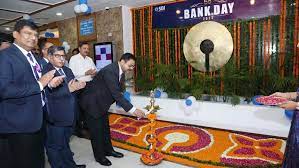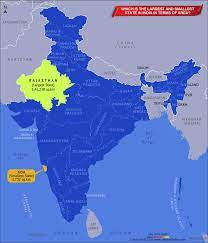
State Bank of India celebrates 68th Bank Day: On July 1, 2023, the State Bank of India celebrated its 68th Bank Day. On July 1, 1955, an Act of Parliament established the Bank. The day was observed around the country by holding various programmes at various locations. At Chandigarh, the Bank Day was celebrated by organizing Circle Level Staff Cultural programme and a get together of local dignitaries, customers, staff and their families at Tagore theatre, Sector-18, Chandigarh. Sh. Vinod Jaiswal, Chief General Manager, Chandigarh Circle graced the occasion as the Chief Guest.
Daily Current Affairs Quiz: July 2023
The get together was made memorable with energetic and melodious performances of Staff members from the states of Punjab, Haryana, Himachal Pradesh & UTs of J&K, Ladakh and Chandigarh in the Circle. At the outset, Sh. Vinod Jaiswal, Chief General Manager, Chandigarh Circle in his brief address, informed the audience about the importance of maintaining the values of glorious heritage of Banking by SBI in its over 200-year journey. SBI is at the forefront of banking by leading in financial inclusion and providing banking services to all.
History of State bank of India
The State Bank of India (SBI) is the largest bank in India and one of the largest banks in the world. It has a long and rich history, dating back to 1806 when the Bank of Calcutta was founded. The Bank of Calcutta was one of three presidency banks in British India, the other two being the Bank of Bombay and the Bank of Madras. These three banks were the first joint-stock banks in India and were granted the exclusive right to issue paper currency.
The three presidency banks united to establish the Imperial Bank of India in 1921. The Imperial Bank of India remained India’s largest bank until 1955, when it was nationalised and renamed the State Bank of India.The nationalization of the State Bank of India was a major step in the development of the Indian banking system. It gave the government a greater role in the banking sector and helped to ensure that banks were more responsive to the needs of the people.
The State Bank of India has grown rapidly since its nationalization. It now has over 24,000 branches and over 50,000 ATMs across India. It also has a presence in over 30 countries around the world. The State Bank of India is a major player in the Indian economy and plays a vital role in the financial development of the country.
Here are some of the key milestones in the history of the State Bank of India:
- 1806: The Bank of Calcutta is founded.
- 1840: The Bank of Bombay is founded.
- 1843: The Bank of Madras is founded.
- 1921: The three presidency banks are merged to form the Imperial Bank of India.
- 1955: The Imperial Bank of India is nationalized and renamed the State Bank of India.
- 1959: The State Bank of India (Subsidiary Banks) Act is passed, enabling the State Bank of India to take over eight former State-associated banks as its subsidiaries.
- 1994: The State Bank of India becomes a public limited company.
- 2008: The State Bank of India launches its first mobile banking app.
- 2017: The State Bank of India launches its first digital bank, YONO.
The State Bank of India is a crucial engine of India’s economic growth. It offers financial services to millions of individuals around the country and facilitates trade and investment. The bank is dedicated to providing the best possible service to its customers and is always innovating to meet the market’s changing needs.
The slogan of SBI is “Pure Banking, Nothing Else”. This reflects the bank’s commitment to providing its customers with simple, transparent, and efficient banking services.
Important takeaways for all competitive exams:
- State Bank of India Chairperson: Dinesh Kumar Khara;
- State Bank of India Founded: 1 July 1955;
- State Bank of India Managing directors: Challa Sreenivasulu Setty;
- State Bank of India Headquarters: Mumbai.





